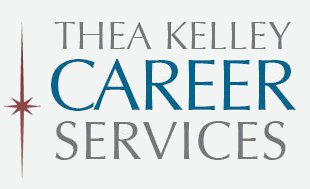 I’ve been laid off myself, and I know how it is. The first thing you want to do is recover from the shock of losing your job – and the stresses of having one! You may not have had a vacation in a long time. You deserve some time off.
I’ve been laid off myself, and I know how it is. The first thing you want to do is recover from the shock of losing your job – and the stresses of having one! You may not have had a vacation in a long time. You deserve some time off.
But there are at least two strong reasons why, in addition to essentials like signing up for unemployment, you should take a few small steps toward your job search first.
First, jobs come through people, and people are everywhere, all the time. Networking isn’t always a planned thing. Opportunities can come unexpectedly and suddenly. If nothing else, you may be asked “What happened to your job?” and the answer you give can nurture opportunities or squelch them. You need to prepare to communicate positively and clearly.
Second, it’s easy for a few weeks off to turn into a few months, while the “doomsday clock” of long-term unemployment (recruiters are leery of candidates who’ve been unemployed for six months or more) ticks in the background. Taking even a baby step or two helps nip procrastination in the bud.
So before you take a couple weeks off, take a day or two to do the following.
What to Do First When You’re Laid Off:
1. Prepare your answers to three key questions.
You will often be asked these three questions:
- “What happened to your job?”
- “What are you looking for now?”
- “Would you tell me a little about yourself?” (or “Um, can you remind me what it is you do, anyway?”)
Your answers to these questions are sometimes called your Exit Statement, Job Objective Statement and Elevator Intro (or Positioning Statement), respectively.
Exit Statement: It’s natural to feel sad, anxious or angry after losing a job, and you’ll need to talk about your feelings with those closest to you. But advertising your wounds to the wider world can hold you back. A brief, positive, forward-looking answer assures others that you’re ready for job leads, introductions, and other valuable networking opportunities.
Example: “I’m proud of what I achieved during my five years with XYZ & Co. Unfortunately a business decision was made that resulted in the elimination of 150 jobs, including mine. So, I’ll be looking for new opportunities along the lines of…”
Job Objective Statement: Your answer to “What are you looking for?” should be as clear and specific as possible. Try to include a job title (or a few related ones), the industry or industries you’re focusing on, what size of company you prefer and the geographic area you’d consider. A quick summary of these points will greatly help others understand what kind of information and introductions you’ll be interested in.
Elevator Intro: Of course, the next question after “What happened to your job?” is “Can you remind me what it is that you do?”
In a networking situation, you answer this with your elevator intro, a super-short (maybe 10-30 seconds) summary of your occupation/skills, stated in a way that’s positive and interesting. You may want to end with your Objective.
Example:
“I’m a product manager. Most recently I led the development of several cool new features of the Yada-You iPhone app for Silicon Tech Inc. Now I’m looking for … ”
(Note: Just because you’re unemployed doesn’t mean you aren’t still a product manager, business analyst or whatever. That’s your profession, even if you’re currently between jobs. Own it!)
2. Round Up Your Resume Resources.
If you’re thinking of hiring a professional to assist with your resume, cover letter, LinkedIn profile or other marketing materials, don’t wait until you “need it as soon as possible.” You don’t want to have to choose someone based on availability rather than skill! Good resume writers are in demand, and often aren’t available to start right away. Once they do, the turnaround time may be several weeks. So find the right writer and get on their calendar now.
Look for credentials like a certification from a major resume writers’ association, and ask to see samples. Ask about the process, which should include an in-depth realtime discussion of your accomplishments, strengths and goals, not just a written questionnaire. Also find out whether the resume writer will do the work herself/himself–which is likely to give a better result–or whether they’ll assign your resume to a subcontractor.
If you’re a do-it-yourselfer, break the ice by identifying some resources and planning when you’ll start. My blog is a good source of tips, and you should also read a good how-to book by a trusted expert like Wendy Enelow or Susan Britten Whitcomb.
Open a path between yourself and opportunity now, so that when you’re finished enjoying a little rest and recreation, it will be much easier to move forward.
For more tips, read What to Do When Laid Off from Work.
This post was originally written in 2013 and has been updated.

